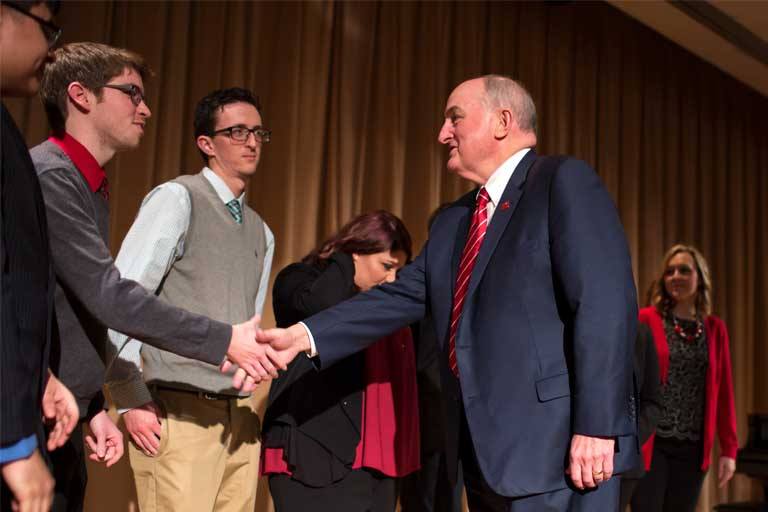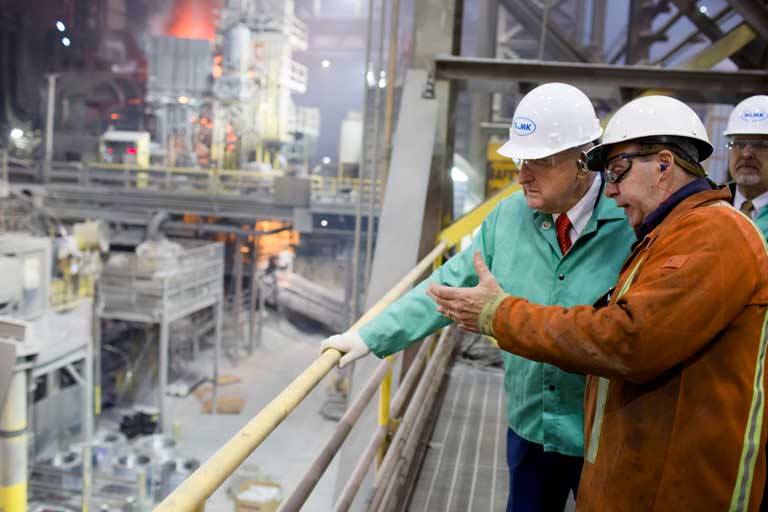For example, IU East is a leader in online education, while IU Northwest in Gary produces a steady stream of well-prepared medical and nursing school graduates who play a vitally important role in providing much-needed health-care resources in the region. In Kokomo (which I plan to visit this spring), IU Kokomo has become a valued education partner for Chrysler as it seeks more innovative ways to provide enhanced educational opportunities for its employees.
Additionally, the university is investing heavily in new and renovated facilities across its regional campuses. Not only do these projects directly benefit our students, but they often also become valuable community resources.
For example, construction is well underway for a new student events center at IU East that will be home to a wide variety of academic, entertainment and athletic events when it opens this fall. At IU Northwest, we remain on schedule to open a new arts and sciences building in the fall of 2017 that will house both IU and Ivy Tech programs.
Renovation of the Main Building on the Kokomo campus was completed in December, while both IU Southeast and IU South Bend have projects in the planning stages that will upgrade existing facilities and systems.
These are just a few of the ways, IU’s regional campuses are striving to serve their students, as well as employers and communities in their home regions, and it is entirely consistent with Indiana University’s core missions to provide the best possible education for the sons and daughters of Indiana and to create an environment in which the university’s faculty can conduct research of the highest quality that contributes to state and national prosperity.
IU’s role as an engine for economic development
As a public university, Indiana University also makes enormous contributions to the economic development and vitality of our state. Our research is leading to major scientific breakthroughs, as well as new inventions, private investment, and new high-wage jobs. In fact, IU was just ranked by Reuters as one of the 50 most innovative universities in the world.
We have seen impressive growth in collaboration across the state as well as tech transfer activities with hundreds of patent applications, invention disclosures, and intellectual property licenses. Last year, IU had 183 U.S. and global patents issued—more than any other year in IU history and more than any other research institution in the state received last year. In addition, start-up companies based on IU-licensed technologies attracted nearly $100 million in outside venture funding last year.
Innovate Indiana—IU’s economic development initiative—is helping to enhance all of these efforts. Under the leadership of Vice President for Engagement Bill Stephan, Innovate Indiana consolidates and coordinates all of the university’s economic development activities, providing a single point of contact for our partners. It invigorates our efforts to turn the innovations of our faculty into new products, services, and treatments.
Vice President Stephan and other IU leaders also regularly canvas the state to explore ways IU can assist in economic development. They continue to work to bring educational policy to bear on the state’s aspirations by strengthening partnerships with leading companies and industry groups, enhancing K-12 initiatives, and by working collaboratively with other higher education institutions in the state, just to name a few of the ways IU is engaged in efforts to enhance the state’s fortunes.
An increasing body of recent research reinforces what those of us in higher education have long held as a fundamental truth: Education and innovation are central elements to the success of a given region.
These elements are especially important as Indiana continues its transformation to a knowledge-based economy, even within its robust manufacturing sector, which increasingly has become home to some of the most technologically advanced companies in the world.
Indeed, a report by the Strengthening America’s Communities Advisory Committee for the U.S. Department of Commerce provided strong justification for focusing much greater attention on our transformation to a knowledge-based innovation economy and aligning public policy and investments accordingly. The report said, in part:
“With increasing competition from across the globe, U.S. industries can no longer rely on low-cost labor, access to raw materials, and low value-added products and services to drive success. In an innovation-based economy, skilled human capital has become the most important form of capital. The quote concludes: “…In the 21st century, America’s communities will derive economic strength by acting regionally to compete globally. Innovation and entrepreneurship are the new engines for job creation, productivity, growth, economic prosperity, and healthy communities.”
Across IU, including in our regional campuses, we are enrolling record numbers of students and producing record numbers of graduates—20,000 last year alone. These are knowledgeable and skilled people who will continue in increasing numbers to apply their knowledge and creativity to drive the engine of successful innovation throughout Indiana and across the country.
Given the fact that as many as 80 percent of our regional campus graduates remain in their home regions after they complete their education, it is easy to see the special—and vitally important—role that IU plays in building the knowledge economies in regions around the state.




